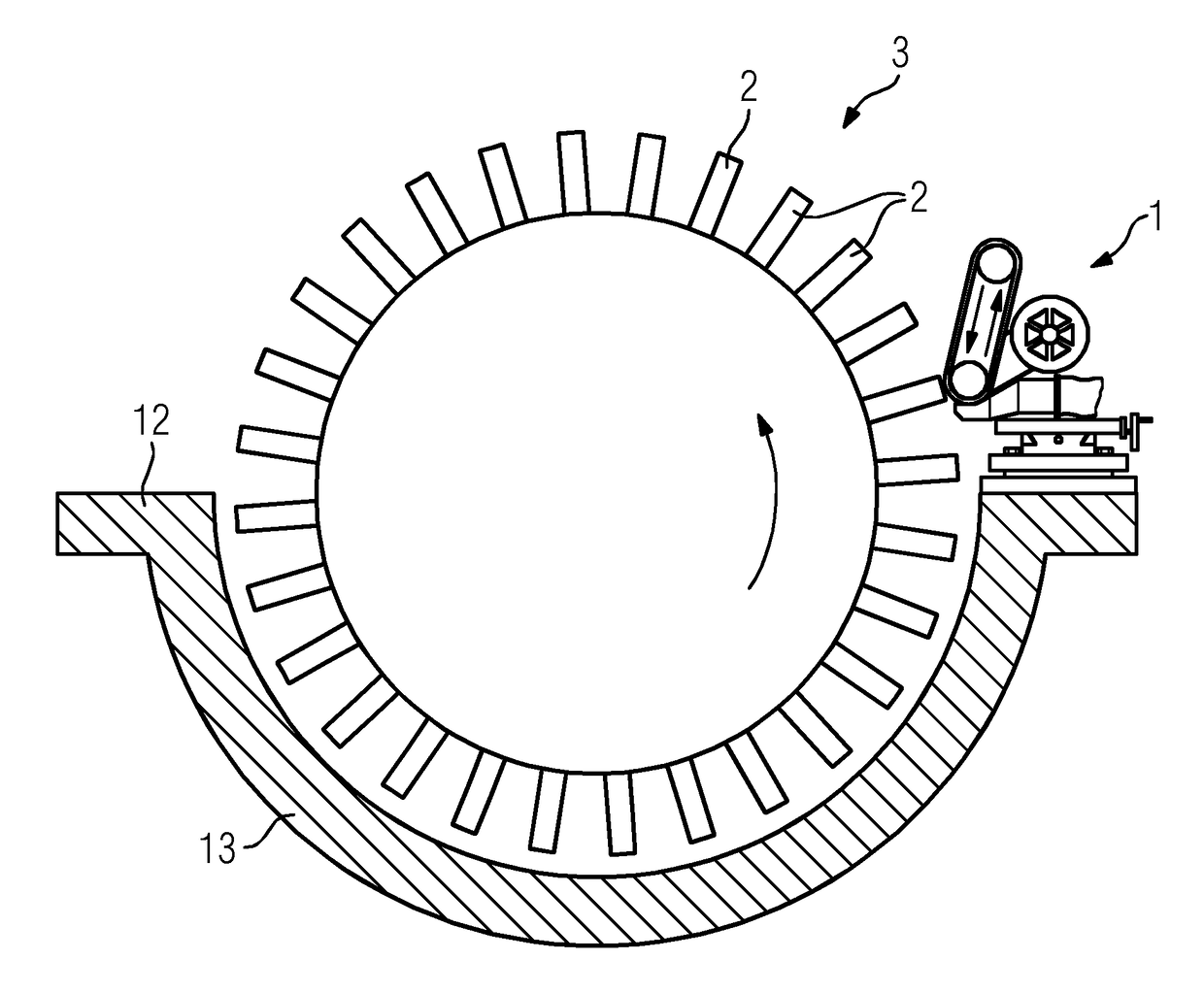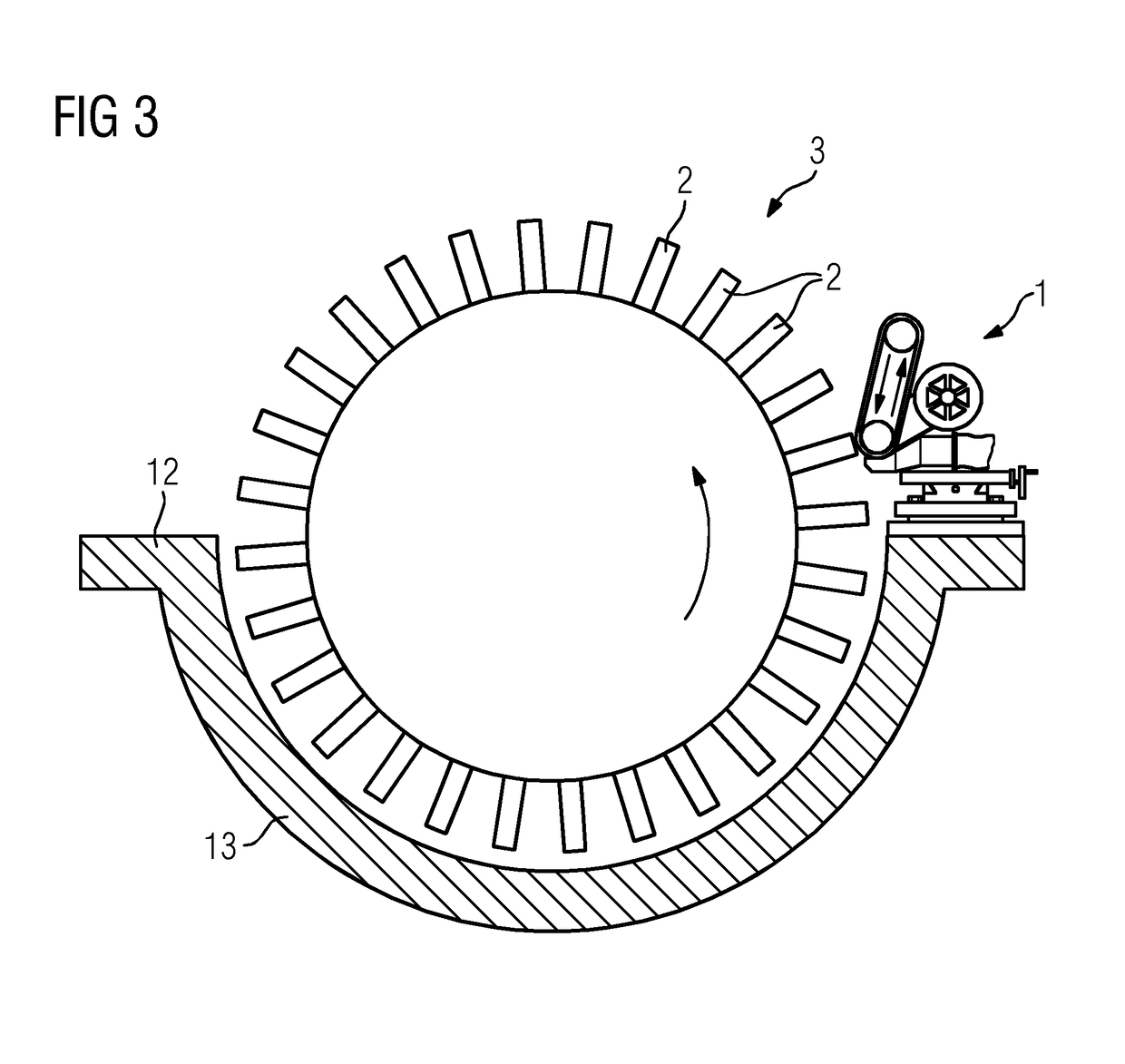Method and apparatus for shortening the rotor blades of a turbomachine
a turbomachine and rotor blade technology, which is applied in the field of shortening the rotor blade of a turbomachine, can solve the problems of long machining time associated with automatic feed, complex grinding apparatus and high cost, and the blades of turbomachines are subjected to very high material loading and corresponding high wear, so as to achieve the effect of reducing the cost of machining and quick
- Summary
- Abstract
- Description
- Claims
- Application Information
AI Technical Summary
Benefits of technology
Problems solved by technology
Method used
Image
Examples
Embodiment Construction
[0036]The belt grinding apparatus 1 comprises a motor 4, a grinding belt 5 which is driven by the motor 4 and is laid around a contact roller 6 and a tensioning roller 7 and is tensioned between these, a feed / travel device 8 and an orienting device 9, wherein the abovementioned components are arranged on a base plate 10. The belt grinding apparatus 1 further comprises an attachment device 11 by means of which the base plate 10 can be attached to a parting joint 12 of a lower casing half 13 of the turbomachine 3.
[0037]The feed / travel device 8 is configured so as to carry out the feed and travel movement of the grinding belt 5 and in the present case is formed by a cross table. With the aid of the feed / travel device 8, the grinding belt 5 may be moved in mutually perpendicular directions by actuating corresponding handwheels 14 and 15, as indicated by the double arrows 16 and 17.
[0038]In the present case, the orienting device 9 is formed by a rotatably mounted plate which is rotated b...
PUM
 Login to View More
Login to View More Abstract
Description
Claims
Application Information
 Login to View More
Login to View More - R&D
- Intellectual Property
- Life Sciences
- Materials
- Tech Scout
- Unparalleled Data Quality
- Higher Quality Content
- 60% Fewer Hallucinations
Browse by: Latest US Patents, China's latest patents, Technical Efficacy Thesaurus, Application Domain, Technology Topic, Popular Technical Reports.
© 2025 PatSnap. All rights reserved.Legal|Privacy policy|Modern Slavery Act Transparency Statement|Sitemap|About US| Contact US: help@patsnap.com



